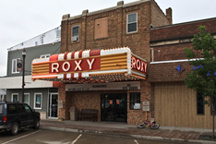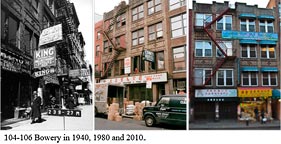Here are 10 things to know about Edward Everett Horton, born 136 years ago today. His name in the credits is enough to convince us to watch just about any picture he’s in.
Tag: The New York Times
10 Things You Should Know About Leslie Howard
Here are 10 things you should know about Leslie Howard, born 127 years ago today. Though he amassed just 33 film credits in his too-brief life, his legacy is a lasting one.
A young up-and-comer
 It’s kind of fun, isn’t it, to imagine a time when Jimmy Stewart was known primarily as a Broadway actor and his successful transition to the silver screen was not at all a certainty.
It’s kind of fun, isn’t it, to imagine a time when Jimmy Stewart was known primarily as a Broadway actor and his successful transition to the silver screen was not at all a certainty.
Here’s what Frank S. Nugent of The New York Times wrote on January 31, 1936, of Stewart’s performance in one of his very first movie roles, in Next Time We Love:
James Stewart, known to playgoers for his work in “Yellow Jack,” “Divided by Three” and “Page Miss Glory,” promises in this his first picture to reach New York to be a welcome addition to the roster of Hollywood’s leading men.
(Not) the last picture show
 Fred R. Conrad/The New York Times |
This story in The New York Times celebrates the role of classic movie theatres in small-town America.
LANGDON, N. D. — Every Friday through Monday night, from her perch behind the Skittles and the M&M’s, Amy Freier awaits the faithful at the historic Roxy Theater. There is Dale Klein, the school bus driver (large Diet Pepsi with a refill). And there is Jeannette Schefter, the social worker (large plain popcorn, medium Diet).
“You know who comes,” said Ms. Freier, one of 200 volunteers in this town of roughly 2,000 who are keeping the Roxy’s neon glowing. “They’re part of the theater.”
In an age of streaming videos and DVDs, the small town Main Street movie theater is thriving in North Dakota, the result of a grass-roots movement to keep storefront movie houses, with their jewel-like marquees and facades of careworn utility, at the center of community life. …
The revival is not confined to North Dakota; Main Street movie houses like the Alamo in Bucksport, Me., the Luna in Clayton, N.M., and the Strand in Old Forge, N.Y., are flourishing as well. But in the Great Plains, where stop signs can be 50 miles apart and the nearest multiplex is 200 miles round trip, the town theater—one screen, one show a night, weekends only—is an anchoring force, especially for families.
It is a tradition that comes with a delicate social choreography (kids up front, teenagers in the back—away from prying parental eyes) and in spite of nature’s ferocity (subzero temperatures can freeze the coconut oil for the popcorn machine)…
It’s great to see that some small-town theatres are thriving. When we traveled cross country for four months in 1992, it was disheartening to see so many local bijous boarded up or in serious decline. And too often (for our taste), when small-town movie theatres do get restored and revived, they’re used solely as performance spaces for high school plays, community theatre, and the like.
Our favorite exception was the Washoe in Anaconda, Montana, a treasure of the theatre that is still going strong after nearly eighty years.
It’s encouraging to learn from the Times story that there’s a trend now toward preserving and restoring the original role of these theatres—showing movies. And the fact that many of these theatres are staffed by volunteers intent on preserving their treasured legacy is doubly heartening.
Talmadge in the Times
A couple of worthy recent stories from The New York Times — one by Dave Kehr about the life and career of silent star Norma Talmadge:
An Independent Woman, Nobly Suffering in Silents
She was perhaps the biggest female star of the silent era. Her dark, depthless eyes gazed from the covers of influential fan magazines, projecting a nobly suppressed pain and longing; in the stories inside, she — or her ghost writers — advised the emerging independent American women of the 1920s on matters of fashion and home décor. She regularly topped the popularity polls, outdistancing rivals like Gloria Swanson, Pola Negri and Mary Pickford. She and her husband, the producer Joseph Schenck, founded their own production company in 1917; by 1924, The New York Times was identifying her as “the highest salaried screen actress.”
 Yet Norma Talmadge is barely remembered today. Worse, she is misremembered, having inspired two unfair caricatures that have lived on in a pair of popular films. In “Singin’ in the Rain” (1952), she is parodied as Lina Lamont (Jean Hagen), a silent diva whose Brooklyn accent undermines her talking debut in a French historical drama. (Talmadge’s second sound feature, the 1930 “DuBarry, Woman of Passion,” was indeed a failure, but Talmadge’s faint accent was the least of its problems.)
Yet Norma Talmadge is barely remembered today. Worse, she is misremembered, having inspired two unfair caricatures that have lived on in a pair of popular films. In “Singin’ in the Rain” (1952), she is parodied as Lina Lamont (Jean Hagen), a silent diva whose Brooklyn accent undermines her talking debut in a French historical drama. (Talmadge’s second sound feature, the 1930 “DuBarry, Woman of Passion,” was indeed a failure, but Talmadge’s faint accent was the least of its problems.)
More malignantly, Billy Wilder used Norma Talmadge as the obvious if unacknowledged source of Norma Desmond, the grotesque, predatory silent movie queen of his 1950 film “Sunset Boulevard.” Enthusiastically interpreted by Gloria Swanson, Talmadge’s rival in the 1920s, the Desmond character draws on Talmadge’s reclusiveness (she left films in 1930, living in a Beverly Hills mansion on the considerable fortune she had earned in her prime), her well-known affair with a younger man (the actor Gilbert Roland, her co-star in several ’20s hits) and her reputation for erratic behavior (suffering from severe arthritis, she became addicted to painkillers and in 1946 married her doctor) to compose the movies’ ultimate symbol of female sexual hysteria.
Norma Desmond has become ubiquitous in American popular culture, but Norma Talmadge has become all but invisible. Although an unusually high percentage of her films survive — “Of her 51 features, 32 are currently thought to be complete and 10 more are preserved in part,” Greta de Groat writes on her excellent Talmadge Web site (stanford.edu/~gdegroat/NT/home.htm) — until now only a handful of her earlier movies have been available on home video.
“The Norma Talmadge Collection” from Kino International corrects that lamentable situation by offering two Talmadge features from her glory years: the 1926 comedy “Kiki,” directed by Clarence Brown, and the 1923 melodrama “Within the Law,” directed by Frank Lloyd. Oddly, neither film is typical Talmadge. “Kiki” is a wholly anomalous comedy, with Talmadge as a Parisian street urchin who becomes a music hall star, and “Within the Law” strays from melodrama into crime-film territory. But there is enough here to get a sense of who Talmadge was and what her gifts were…. [read more]
And another, by Dan Barry, about a century and a half in the colorful life of a small hotel on the Bowery in New York City:
On the Bow’ry
Open the door to a small hotel on the Bowery.
A small hotel, catering to Asian tourists, that used to be a flophouse that used to be a restaurant. That used to be a raucous music hall owned by a Tammany lackey called Alderman Fleck, whose come-hither dancers were known for their capacious thirsts. That used to be a Yiddish theater, and an Italian theater, and a theater where the melodramatic travails of blind girls and orphans played out. That used to be a beer hall where a man killed another man for walking in public beside his wife. That used to be a liquor store, and a clothing store, and a hosiery store, whose advertisements suggested that the best way to avoid dangerous colds was “to have undergarments that are really and truly protectors.”
Climb the faintly familiar stairs, sidestepping ghosts, and pay $138 for a room, plus a $20 cash deposit to dissuade guests from pocketing the television remote. Walk down a hushed hall that appears to be free of any other lodger, and enter Room 207. The desk’s broken drawer is tucked behind the bed. Two pairs of plastic slippers face the yellow wall. A curled tube of toothpaste rests on the sink.
Was someone just here? Was it George? [read more]

